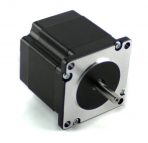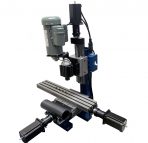A stepper motor driver is an electronic device that is used to drive the stepper motor. By itself, it usually does nothing and must be used together with a controller like PoKeys57CNC.
There are a lot of different types of stepper motor drivers but in general, all do the same thing – move stepper motors.Does a stepper motor need a driver?
Yes. Stepper motors require voltages and/or currents that the controller simply can’t produce. Therefore we need to use a stepper motor driver. This electronic device will transform our movement instructions from a controller into a sequence where the winding in the stepper motor will be turned on or off while still providing enough power to it.
You can also buy step motor at https://www.automationtechnologiesinc.com/products-page/stepper-motors.

All of this we of course be produce by a microcontroller driving a few FETs but the design and the programming would take time. Thankfully there are already existing solutions.
If we summarize, controllers are in general a pure digital devices with low power output capability so we use an analog power stage as an interface between digital (controller) and mechanic (motor) world.
How does stepper motor drivers work?
The basic task of the driver is to generate an appropriate signal from the input data to move the motor axis. The most common approach driving a stepper motor we call H-bridge. H-bridge circuits consist of 4 FET transistors with very low resistance between drain and source contact (RDSon) when in active state. In general we need at least two H-bridges since the motor has minimal two coils. With right signals combination on FET’s gate we control a current direction through motor’s coil. Alternating excitation of two windings causes the motor axis to shift.
Forward and reverse coil driving
How do I choose a stepper motor driver?
When choosing the right driver for our system, we first need information about the motors we will be using. This is the main important information. We have to choose the driver according to the power stepper driver can deliver to the motor.
For example, bigger motor like NEMA 34 has a higher holding torque value than smaller NEMA 17. That’s why NEMA 34 consume more current and we need a driver with higher amperage characteristic.
